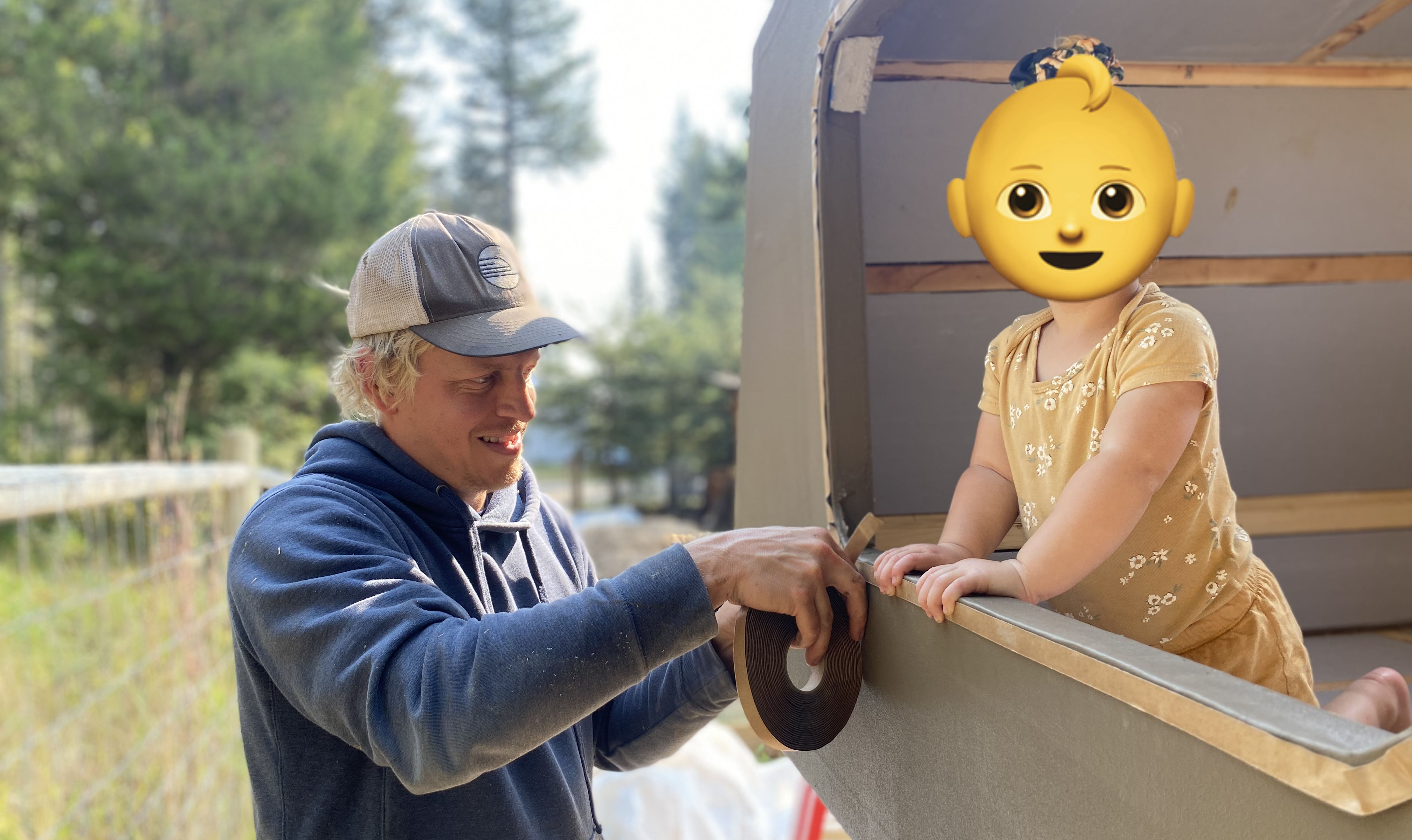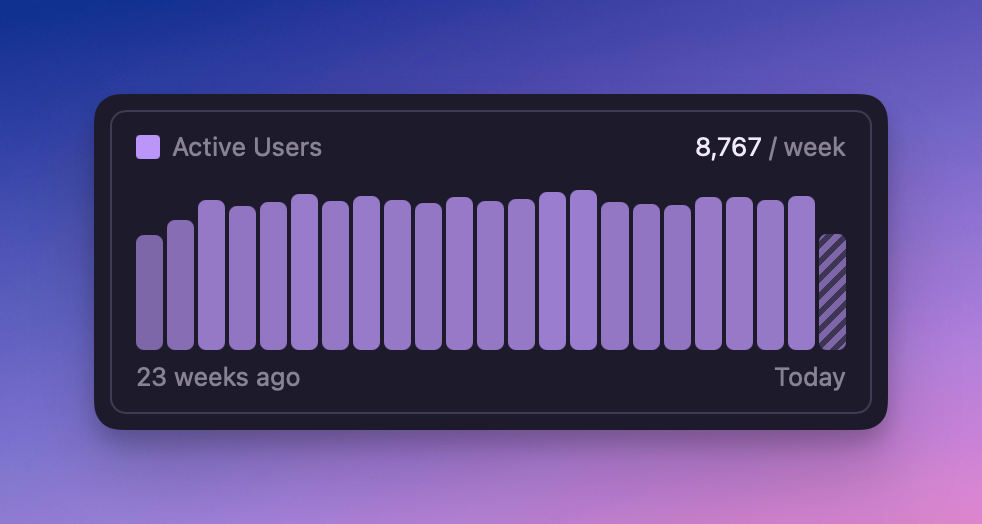Wow. It’s been almost two months since I’ve typed on a keyboard, and it feels good to be back. As an indie developer, sustainability is a huge priority, and vacationing is a key part of that. I spent time with family, hung out at the beach, and even built a truck camper!

Installing a window, with some help
The first thing I did after coming back was read all 177 responses to the 2025 user survey, and I’m excited to summarize the results and share the plan for the next year or so (jump to the plan 👇🏼).
Users are 93% likely to recommend Yaak to someone else. This was mostly expected, as most people talking about Yaak online absolutely love it. Hopefully, it’ll increase even further as Yaak improves over time.
| Previous Tool | Responses |
|---|---|
| 😃 5 (most likely) | 121 (68%) |
| 🙂 4 | 47 (27%) |
| 😐 3 | 7 (4%) |
| 🙁 2 | 1 (0.6%) |
| 😫 1 (least likely) | 1 (0.6%) |
The tools people migrate from are actually quite boring since they align exactly with the popularity of each. Though it is nice to see Bruno users coming over because it’s the most common choice of people getting fed up with Postman and Insomnia.
| Previous Tool | Responses |
|---|---|
| 🧑🏼🚀 Postman | 43.5% |
| 👁️ Insomnia | 36.2% |
| 🐶 Bruno | 12.4% |
| 🐾 RapidAPI | 4.5% |
| 🛸 Hoppscotch | 3.4% |
Most users agree that Yaak’s largest advantage is simplicity and intuitive UI, followed closely by its offline nature and the ability to sync requests with Git and other file-based tools. This aligns nicely with the reasons I created Yaak in the first place.
It’s open source and has no features locked behind a paywall, which every other client chooses to have.
Has streaming output for http and it doesn’t overcomplicate things by putting everything in your face
Directory Sync, I’m able to sync my data between devices using my existing file sync solution (Seafile).
Does not have a paywall like Bruno, but has the same good features
The thing preventing most people from using Yaak more is the inability to convince their coworkers and friends to switch. And, since word of mouth is the main growth channel, the result has been a flat active-user count for the past ~6 months.

Active users and downloads from the Public Metrics Page
Even though Yaak is able to import directly from Postman and other sources, the switching cost for this kind of tool is huge.
To help persuade more people to switch, I’ll be prioritizing:
Another barrier to switching is the commercial-use license because (1) referring Yaak to a coworker requires them to spend money and (2) less frequent users find it difficult to justify the cost.
Switching to a freemium model (putting features behind a paywall) would definitely improve revenue growth. However, it would also introduce an incentive to gradually move more and more features behind the paywall over time, to juice profit. Incentives like this are exactly how enshittification happens and I want to avoid that at all costs.
I was initially planning to adopt an open source donation model, but not being able to find any other success stories besides Blender made me stick with a commercial-use license (essentially suggested donation) as the closest alternative.
Along with providing resources to help with switching, there are some missing features that should help adoption as well. All of them were already being tracked on the roadmap, so I’ve linked them here, ordered by priority.
The last thing I noticed in the responses was some users requesting features that already exist. One user even asked for variables—one of the most fundamental features of Yaak, so there’s still some work to do within the app to ensure users can discover what they don’t know.
This question should have been combined with the previous one, as there’s a lot of overlap, but it was nice to hear that people are trying to convince others to use Yaak. This is a huge positive signal and something that will get easier as Yaak approaches critical mass.
Most of the open-ended feedback was filled with encouragement and kindness. Here are a few that stood out.
I hope you guys succeed
Congratulations on the good work and transparency as always
Don’t enshittify this app also
Only keep it fast, free and not add bloat features please
What to do with all this information? Well, get to work, of course. 😃
The survey results, combined with the Feedback on the roadmap, allowed me to come up with clear priorities for the next phase of Yaak.
Keep the pricing model:
The pricing model aligns closely with my values and Yaak’s mission to be a private, open,
and accessible API client. Since revenue is headed towards sustainability, the
commercial-use pricing model is here to stay.
Keep the core focused:
Yaak is an API client at its core, and that won’t change. New features will only be added
if they make sense for everyone, with lesser-used features remaining out of the way until
needed. The survey results confirm this is Yaak’s largest advantage so it’s a priority to
keep it that way.
Polish the core:
Development on Yaak has mostly been focused on checking off features, meaning Yaak is
useful for a lot of use cases, but a lot of them are not as polished or complete as I’d
like. Keep an eye out for upcoming improvements to core features like Git integration,
data import, and general usability.
Add plugin APIs:
Yaak’s advantage is simplicity, but I don’t want to alienate those with more advanced
use cases. This is why plugins exist. Similar to programming IDEs like VSCode or IntelliJ,
plugins help extend the app without negatively affecting the broader user base. I’ll
continue adding more APIs over time to further support more use cases.
Publish more content:
Word of mouth has been the most consistent driver of growth so far, but hard-hitting
content has had a larger impact over Yaak’s lifetime. To fuel the next phase of growth,
I’ll be working on sharing more interesting content (like this) while also building out
documentation and resources to help drive organic traffic (SEO).
Yaak has come a long way since its public launch, less than two years ago. It improves the lives of thousands of developers every single day, and the survey results prove that things are moving in the right direction.
The next phase is about continuing what’s already working—refining the core experience, adding flexibility through plugin APIs, and making it easier for new users and teams to switch.
I’m more confident than ever that Yaak will reach long-term sustainability without compromising on the values that got it this far, so keep submitting feedback, telling your friends, and publishing plugins.
See you soon 🙂